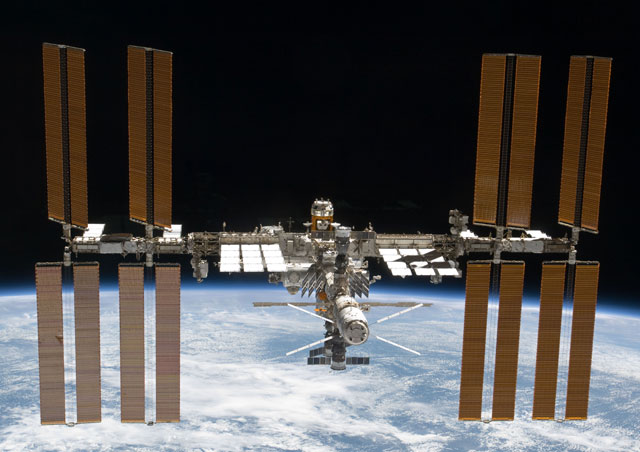In constant low Earth orbit (LEO) at 51.6˚ orbital inclination, the International Space Station is the closest to colonising space that humanity has ever been. Founded in the wake of the Cold War and the resulting end of competing Russian Mir-2 and US Freedom station concepts, among others, the ISS is maintained by a 15-nation group, and provides an international laboratory for technology in a microgravity environment.
The ISS is modular, and for the most part any of the nodes or modules can be detached and reattached in different configurations - the space station has been rearranged several times as it has grown. The first piece of the ISS in orbit was the Russian-built Functional Cargo Block (FGB, using Cyrillic initials), launched in 1998, followed quickly by Node 1 and the service module. The first permanent crew entered the ISS in 2000, and people have resided aboard ever since in teams of three to six (more when the Space Shuttle visited).
 |
|---|
NASA |
The space station is divided into a Russian half and a US/international half, connected by the Node 1 module (also called Unity). In addition to being a crucial connector, there are four sleeping stations aboard Node 1. Connected to Unity are the FGB (via Pressurised Mating Adaptor 1), the US laboratory (called Destiny), the Permanent Multipurpose Module (mainly used for storage) and Node 3 (or Tranquility). A similar node, Node 2 (Harmony) extends from the other side, anchoring the European Columbus lab and pressurised Japanese sections.
The full article is exclusively available to read for FG Club members.
(n.b. Pro users can sign into the FG Club with their existing details) |
Source: Flight International


























